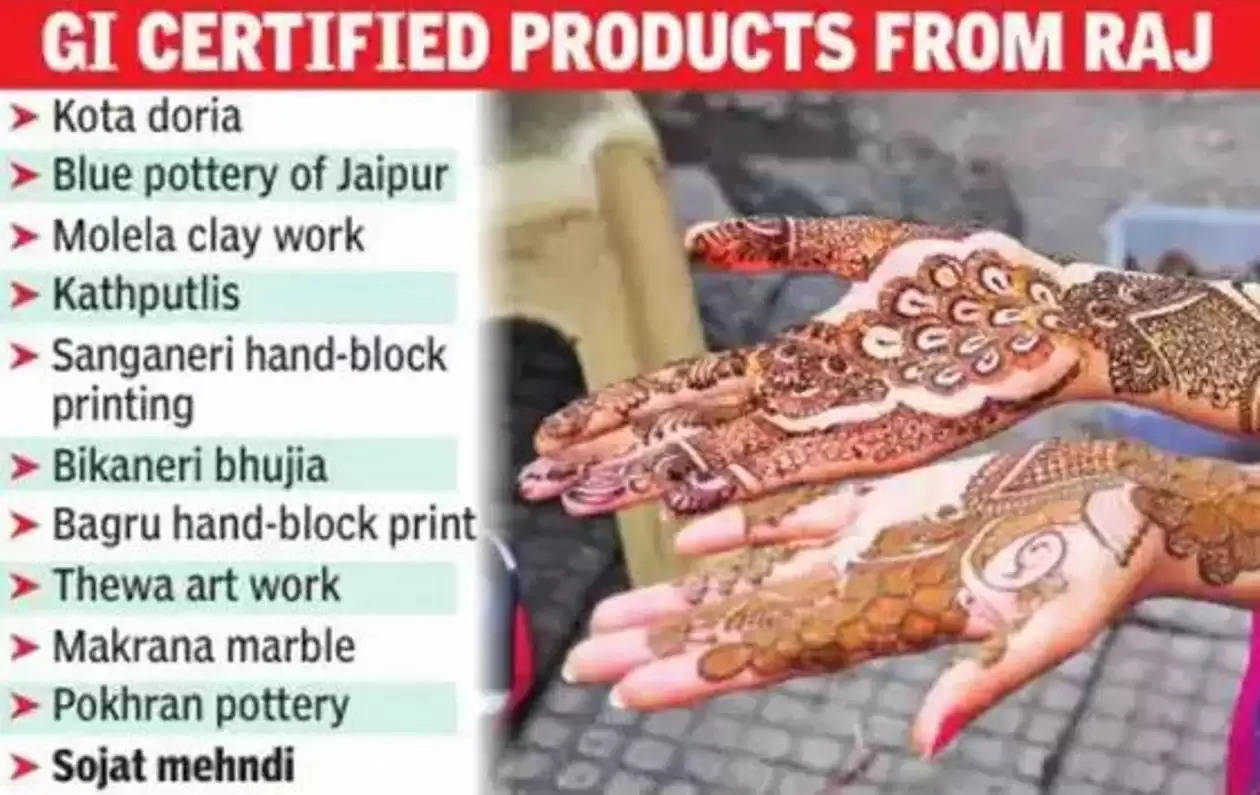Rajasthan district’s Henna receives prestigious GI Tag
Katrina Kaif had also adorned this Henna on her hand for her wedding
Hariyali Teej is a festival during which married women observe fasting and engage in activities like applying makeup and Henna (Mehendi). One city in Rajasthan is particularly renowned for its exceptional Henna (Mehndi), and that is Sojat, situated in the Pali district. The application of Henna holds significant importance during this occasion due to its rich color and captivating fragrance. Notably, the Henna from Sojat has achieved a distinctive honor by being granted a Geographical Indication Tag (GI Tag), recognizing its unique qualities and regional origin.
What is a GI Tag?
A Geographical Indication (GI) Tag is a form of intellectual property right that designates the geographical origin of a product. It is used to identify products that have specific qualities, reputation, or characteristics that are closely linked to their place of origin. The GI Tag helps protect the product from imitations and ensures that only products produced in the designated geographical region and adhering to specific production methods can use the tag. This recognition adds value to the product and safeguards the interests of producers and consumers alike.
The Central Government has recently bestowed a Geographical Indication (GI) Tag upon Udaipur's Koftgiri Art. Koftgiri is the intricate art of embellishing arms and weaponry. With its origins dating back 500-700 years to the Mughal era in India, this ancient craft finds its production hub in the Mewar district. In a prestigious lineup of renowned traditional arts, Udaipur's Koftgiri Art is now accompanied by other distinguished arts including Jodhpur's Bandhej, Bikaner's Usta art, and Rajsamand’s Pichwai Art, all of which have also been granted the GI Tag.
Sojat's Henna is renowned for its exceptional quality, particularly its vibrant red color. This henna variety has gained prominence due to its distinct shade that sets it apart from other types of henna. The uniqueness of its color makes it highly sought after for various ceremonial and decorative purposes.
The excellence of this mehndi variety is gauged by its color vibrancy, purity levels, and its efficacy in dyeing. Sojat City, often referred to as the 'mehndi nagri' (henna city), proudly holds the title of India's biggest hub for cultivating and producing henna. The uniqueness of its hue can be attributed to the specific soil composition and rainfall pattern in the region.
The henna cultivation in Sojat is extensive, spanning across an impressive area of 60,000 hectares, which includes the surrounding regions of the Pali district in Rajasthan. This expansive cultivation is a testament to the demand and popularity of Sojat's Henna. The ideal climatic and soil conditions in the region contribute to the growth of henna plants that produce the richly pigmented leaves, resulting in the characteristic red hue.
One remarkable aspect of Sojat's Henna is its global reach. The henna produced in this region is not limited to domestic consumption but has managed to make its way to 130 countries around the world. This wide distribution speaks volumes about the widespread recognition and appeal of Sojat's Henna on an international scale. The significance of Sojat's Henna is further highlighted by its association with notable events and figures. For instance, even public figures like actor Katrina Kaif, who tied the knot recently, chose to apply Sojat's Henna on her hands during her wedding celebrations.
Sojat's Henna's distinct red color, extensive cultivation area, global distribution, and recognition by well-known personalities collectively contribute to its special status in the world of henna art and cultural traditions.
To join us on Facebook Click Here and Subscribe to UdaipurTimes Broadcast channels on GoogleNews | Telegram | Signal



